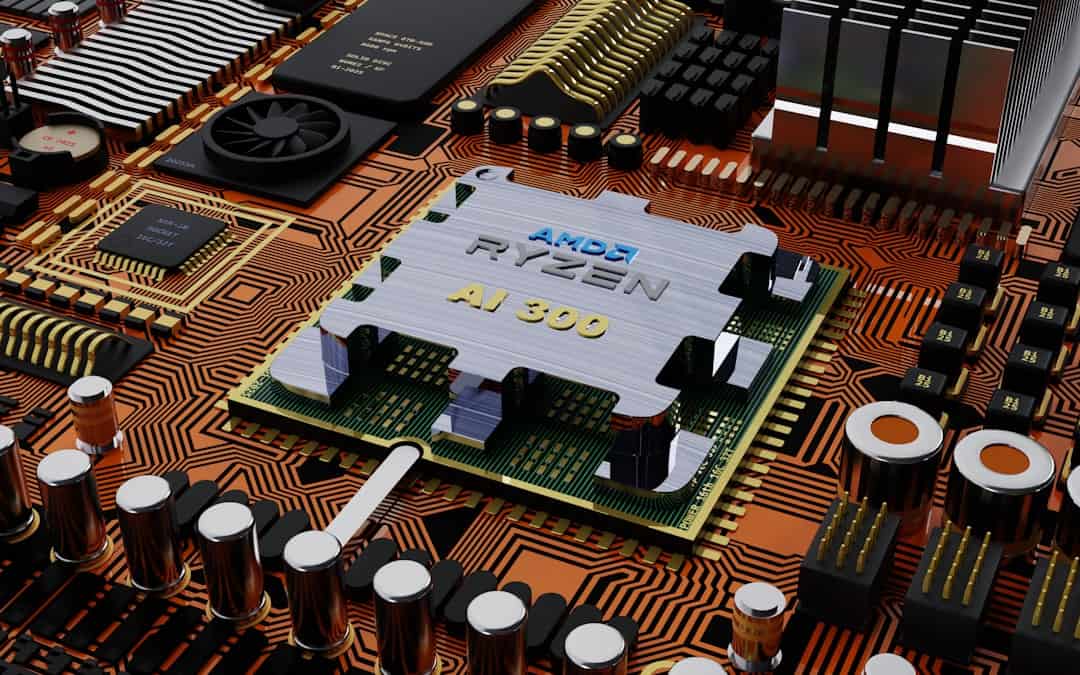In the modern digital era, recommendation systems have become essential components of our online interactions. These systems are ubiquitous, offering suggestions for movies on streaming platforms, products on e-commerce websites, and music on audio streaming services. They serve a vital function in assisting users to discover new content and make well-informed choices.
Deep learning, a branch of artificial intelligence, has emerged as a potent tool for enhancing the capabilities of recommendation systems. By utilizing sophisticated algorithms and extensive datasets, Deep Learning techniques can analyze user behavior and preferences to deliver more precise and tailored recommendations. This article will examine the impact of deep learning on recommendation systems, including its applications, challenges, notable successes, ethical implications, and emerging trends in the field.
Key Takeaways
- Deep learning has the potential to significantly enhance recommendation systems by providing more accurate and personalized recommendations to users.
- Deep learning involves the use of neural networks to process and analyze large amounts of data, making it well-suited for recommendation systems.
- Artificial intelligence plays a crucial role in improving recommendation algorithms by enabling them to learn and adapt to user preferences over time.
- Despite its potential, deep learning in recommendation systems faces challenges such as data privacy concerns and the need for large amounts of training data.
- Case studies and success stories demonstrate the effectiveness of deep learning in recommendation systems, showcasing its ability to improve user satisfaction and engagement.
Understanding Deep Learning and its Application in Recommendation Systems
Understanding User Preferences
In the context of recommendation systems, deep learning can analyze vast amounts of user data, including browsing history, purchase behavior, and social interactions, to understand individual preferences and make personalized recommendations.
Collaborative Filtering and Diverse Data
One of the key applications of deep learning in recommendation systems is collaborative filtering, which involves analyzing user behavior to identify patterns and make predictions about what users might like. Deep learning models can also incorporate various types of data, such as text, images, and audio, to provide more diverse and context-aware recommendations.
Improved User Satisfaction and Engagement
Overall, deep learning enables recommendation systems to deliver more accurate and relevant suggestions, leading to improved user satisfaction and engagement.
The Role of Artificial Intelligence in Improving Recommendation Algorithms

Artificial intelligence (AI) plays a crucial role in improving recommendation algorithms by enabling systems to analyze and interpret complex patterns in user data. Traditional recommendation systems often rely on simple rules or statistical methods to make predictions, which may not capture the nuances of user preferences. AI-powered recommendation systems, on the other hand, can leverage advanced techniques such as natural language processing, computer vision, and deep learning to understand user behavior in a more sophisticated manner.
For example, AI can analyze unstructured data such as user reviews or social media posts to gain insights into user preferences and sentiments. This allows recommendation systems to make more informed and personalized suggestions, leading to higher user engagement and satisfaction. Additionally, AI can continuously learn and adapt to changing user preferences, ensuring that recommendations remain relevant over time.
Challenges and Limitations of Deep Learning in Recommendation Systems
| Challenges and Limitations | Deep Learning in Recommendation Systems |
|---|---|
| Data Sparsity | Deep learning models struggle with sparse data, which is common in recommendation systems where users interact with only a small portion of items. |
| Cold Start Problem | Deep learning models may struggle to provide accurate recommendations for new items or users with limited interaction history. |
| Scalability | Deep learning models can be computationally expensive and may not scale well to large datasets and real-time recommendation systems. |
| Interpretability | Deep learning models are often considered as black boxes, making it challenging to interpret and explain the recommendations to users. |
| Overfitting | Deep learning models are prone to overfitting, especially when dealing with limited interaction data, leading to poor generalization. |
While deep learning has shown great promise in enhancing recommendation systems, it also comes with its own set of challenges and limitations. One of the main challenges is the need for large amounts of high-quality data to train deep learning models effectively. Recommendation systems rely on user data to make accurate predictions, and obtaining and managing this data while ensuring user privacy can be a complex task.
Additionally, deep learning models are often complex and computationally intensive, requiring significant computational resources and expertise to develop and maintain. Another challenge is the “cold start” problem, where new users or items have limited data available for making recommendations. Deep learning models may struggle to provide accurate suggestions in such scenarios.
Furthermore, there are concerns about the transparency and interpretability of deep learning models, as they can be black boxes that make it difficult to understand how recommendations are generated.
Case Studies and Success Stories of Deep Learning in Recommendation Systems
Despite the challenges, there have been numerous success stories of deep learning being applied to recommendation systems across various industries. For example, Netflix has been using deep learning algorithms to power its recommendation system, which has significantly improved user engagement and retention. By analyzing user behavior and preferences, Netflix can recommend personalized content that matches individual tastes, leading to increased viewership and customer satisfaction.
Similarly, Amazon has leveraged deep learning to enhance its product recommendation system, resulting in higher conversion rates and customer loyalty. In the music streaming industry, Spotify has utilized deep learning models to analyze user listening habits and provide personalized playlists and recommendations, leading to longer user sessions and increased subscription renewals. These case studies demonstrate the effectiveness of deep learning in improving recommendation systems and driving business outcomes.
Ethical Considerations and Privacy Concerns in AI-Powered Recommendations

As recommendation systems become more sophisticated with the use of AI and deep learning, ethical considerations and privacy concerns have come to the forefront. AI-powered recommendation systems have the potential to influence user behavior and shape their preferences, raising questions about transparency and fairness. There is a risk of creating filter bubbles or echo chambers where users are only exposed to content that aligns with their existing beliefs and preferences, limiting their exposure to diverse perspectives.
Additionally, there are concerns about the privacy of user data and the potential for misuse or unauthorized access. It is crucial for organizations to prioritize user privacy and data security when developing AI-powered recommendation systems. Transparency and explainability are also important considerations to ensure that users understand how recommendations are generated and have control over their preferences.
Future Trends and Innovations in Deep Learning for Enhanced Recommendations
Looking ahead, there are several exciting trends and innovations in deep learning that have the potential to further enhance recommendation systems. One trend is the use of reinforcement learning, a type of machine learning where agents learn to make decisions through trial and error, to optimize recommendation strategies in real-time. This approach can lead to more adaptive and personalized recommendations that align with user preferences.
Another trend is the integration of multimodal data, such as text, images, and audio, into recommendation systems using advanced deep learning techniques. This can enable more context-aware recommendations that consider diverse types of user interactions. Furthermore, there is growing interest in developing more interpretable deep learning models for recommendation systems to improve transparency and trust.
Overall, the future of deep learning in recommendation systems looks promising, with continued advancements that will drive more personalized and impactful user experiences. In conclusion, deep learning has emerged as a powerful tool for enhancing recommendation systems by enabling more accurate and personalized suggestions based on user behavior and preferences. While there are challenges and ethical considerations associated with the use of deep learning in recommendation systems, the potential for driving business outcomes and improving user experiences is significant.
As organizations continue to invest in AI-powered recommendation systems, it is essential to prioritize transparency, fairness, and privacy to build trust with users. With ongoing advancements in deep learning techniques and innovations, the future of recommendation systems looks promising for delivering more relevant and engaging content to users across various domains.
If you’re interested in learning more about the future of the metaverse industry, you should check out this article on future trends and innovations in the metaverse. It discusses projections in the metaverse industry and how it could impact various sectors, including the development of deep learning recommender systems.
FAQs
What is a deep learning recommender system?
A deep learning recommender system is a type of recommendation system that uses deep learning techniques, such as neural networks, to analyze and predict user preferences and make personalized recommendations.
How does a deep learning recommender system work?
A deep learning recommender system works by processing large amounts of user data, such as past interactions and preferences, and using deep learning algorithms to learn patterns and make predictions about what items a user might like.
What are the advantages of using a deep learning recommender system?
Some advantages of using a deep learning recommender system include its ability to handle complex and unstructured data, its potential for making more accurate and personalized recommendations, and its adaptability to changing user preferences.
What are the potential applications of deep learning recommender systems?
Deep learning recommender systems can be used in a variety of applications, such as e-commerce platforms, streaming services, social media platforms, and personalized content recommendations.
What are some common challenges of implementing a deep learning recommender system?
Some common challenges of implementing a deep learning recommender system include the need for large amounts of high-quality data, the potential for overfitting, and the complexity of training and optimizing deep learning models.











Leave a Reply